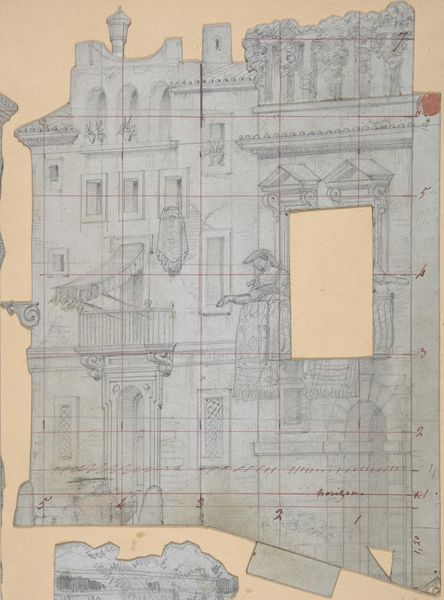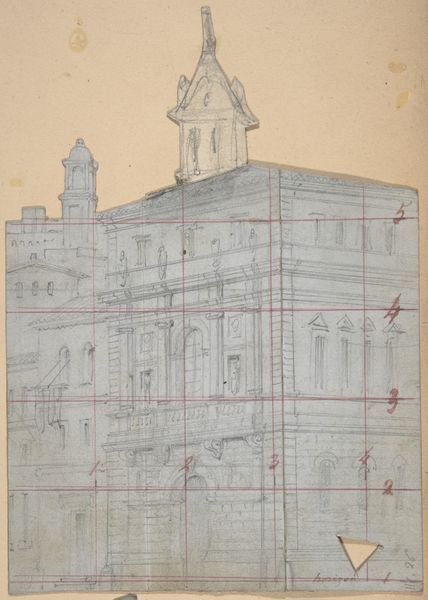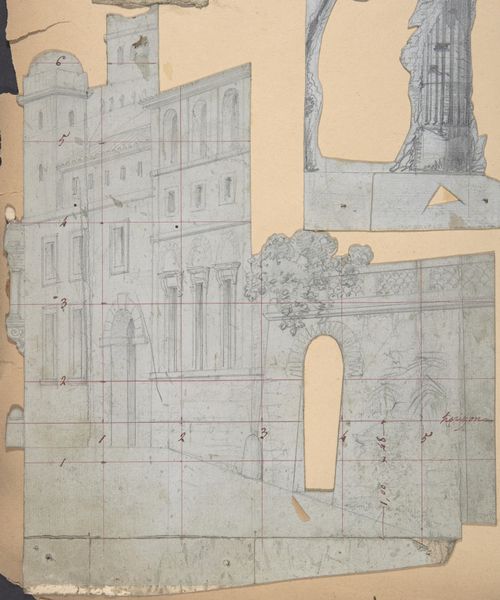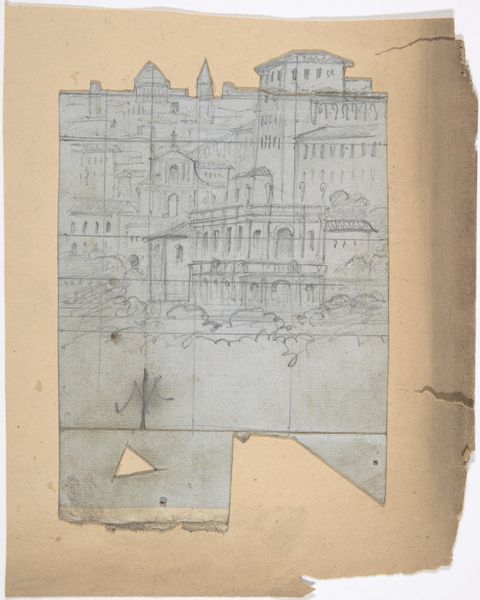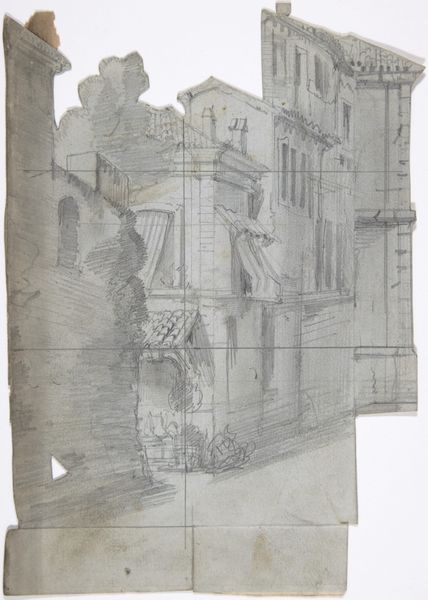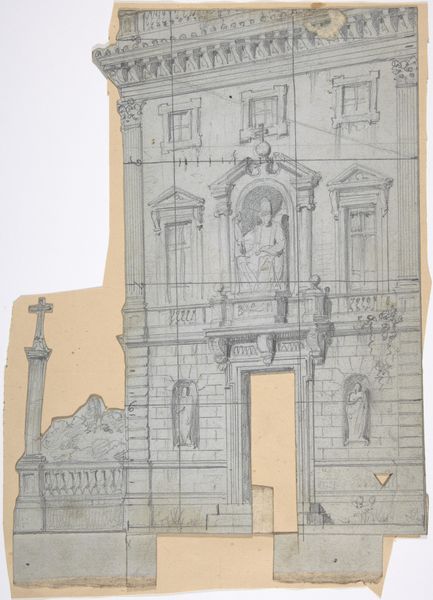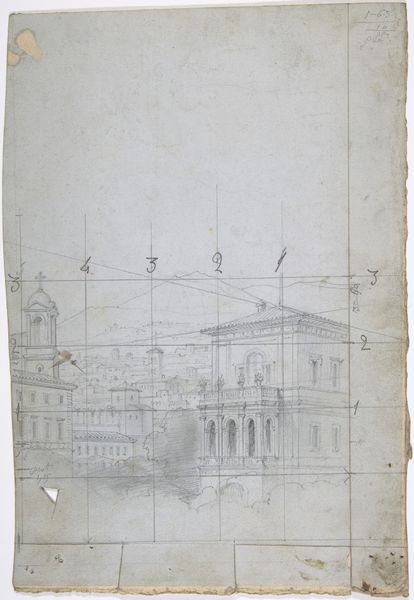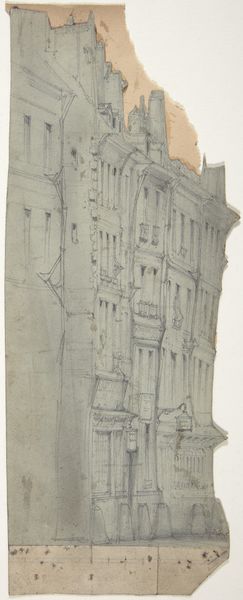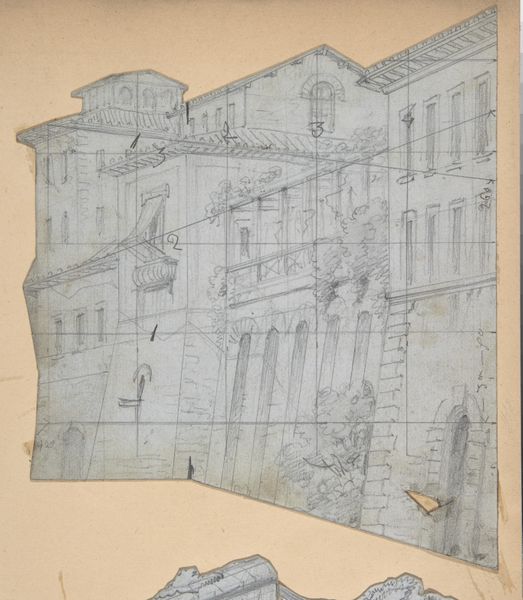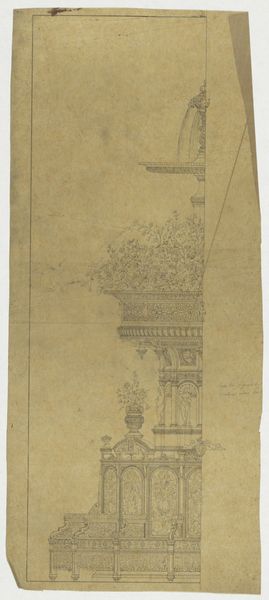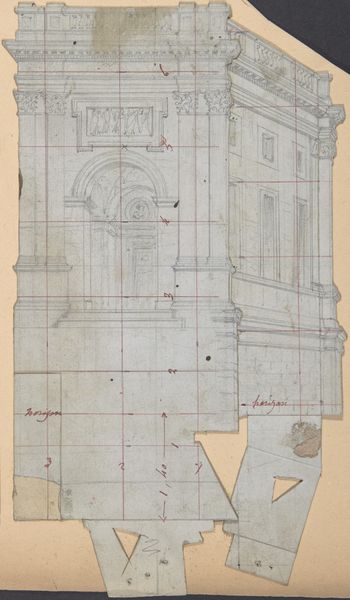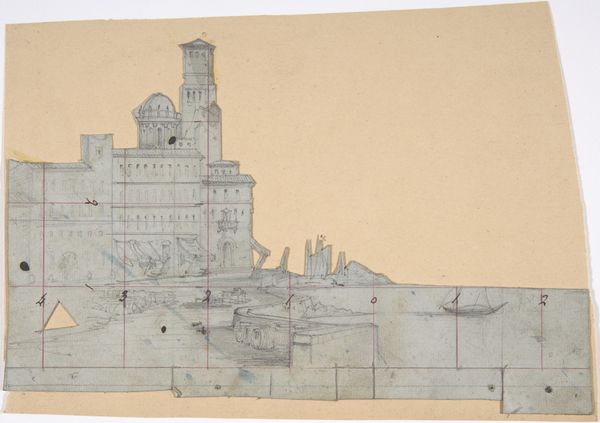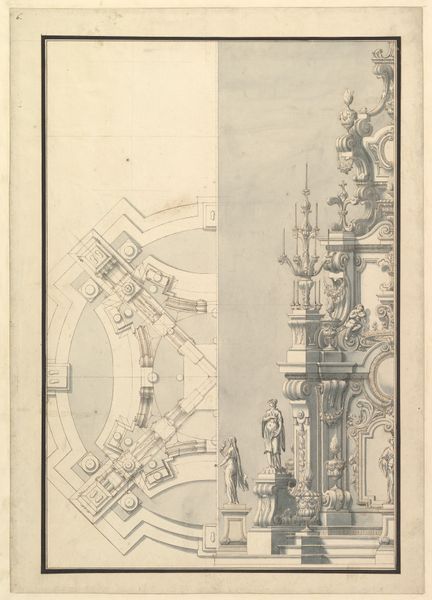
Design for a Stage Set at the Opéra, Paris 1830 - 1890
0:00
0:00
drawing, print, pencil, architecture
#
drawing
#
neoclacissism
# print
#
pencil
#
cityscape
#
architecture
#
building
Dimensions: Irregular sheet: 7 7/8 x 4 15/16 in. (20 x 12.6 cm)
Copyright: Public Domain
Editor: This is Eugène Cicéri’s “Design for a Stage Set at the Opéra, Paris,” likely created between 1830 and 1890 using pencil, pen and brown ink, and graphite. It's really impressive how much detail he gets with such limited materials. What immediately strikes me is the architecture, but what else do you see? Curator: The drawing meticulously captures the architectural structure and the calculated arrangements. Notice the prominence given to vertical lines; the towering columns, spires, and facade that draw the eye upwards. How do you interpret that directional pull? Editor: It gives a sense of grandeur and emphasizes the imposing scale of the building. Like a symbol of power, reaching for the sky! Curator: Precisely! Also, consider how the use of light and shadow articulate form and depth. There’s a rhythmic interplay in the linear structure – observe the horizontal division achieved by the staircase in opposition to the overall verticality. This provides a spatial complexity within a seemingly straightforward Neoclassical design. Editor: That's a great point about the light. The shading emphasizes different planes and shows how light falls across the facade. How was the grid significant in Cicéri’s design? Curator: The grid’s presence underscores Cicéri’s structured methodology and focus on proportion. The grid highlights the modularity inherent in the architectural design, indicating a systemic approach. Does the drawing’s incompleteness affect its merit? Editor: At first I was thrown by the unfinished edges, but maybe they emphasize it’s just a sketch to focus on what matters for the stage design itself! It feels less like a finished work and more about pure function and planned aesthetic, which seems to have some merit! Curator: Indeed. Focusing on the form and function enables one to appreciate Cicéri’s vision for Neoclassical scenography, moving beyond narrative representation. It’s all about how form communicates meaning. Editor: I can certainly appreciate how the scaffolding behind the facade creates a balance. The design is really well-constructed! Thanks for clarifying that for me.
Comments
No comments
Be the first to comment and join the conversation on the ultimate creative platform.
